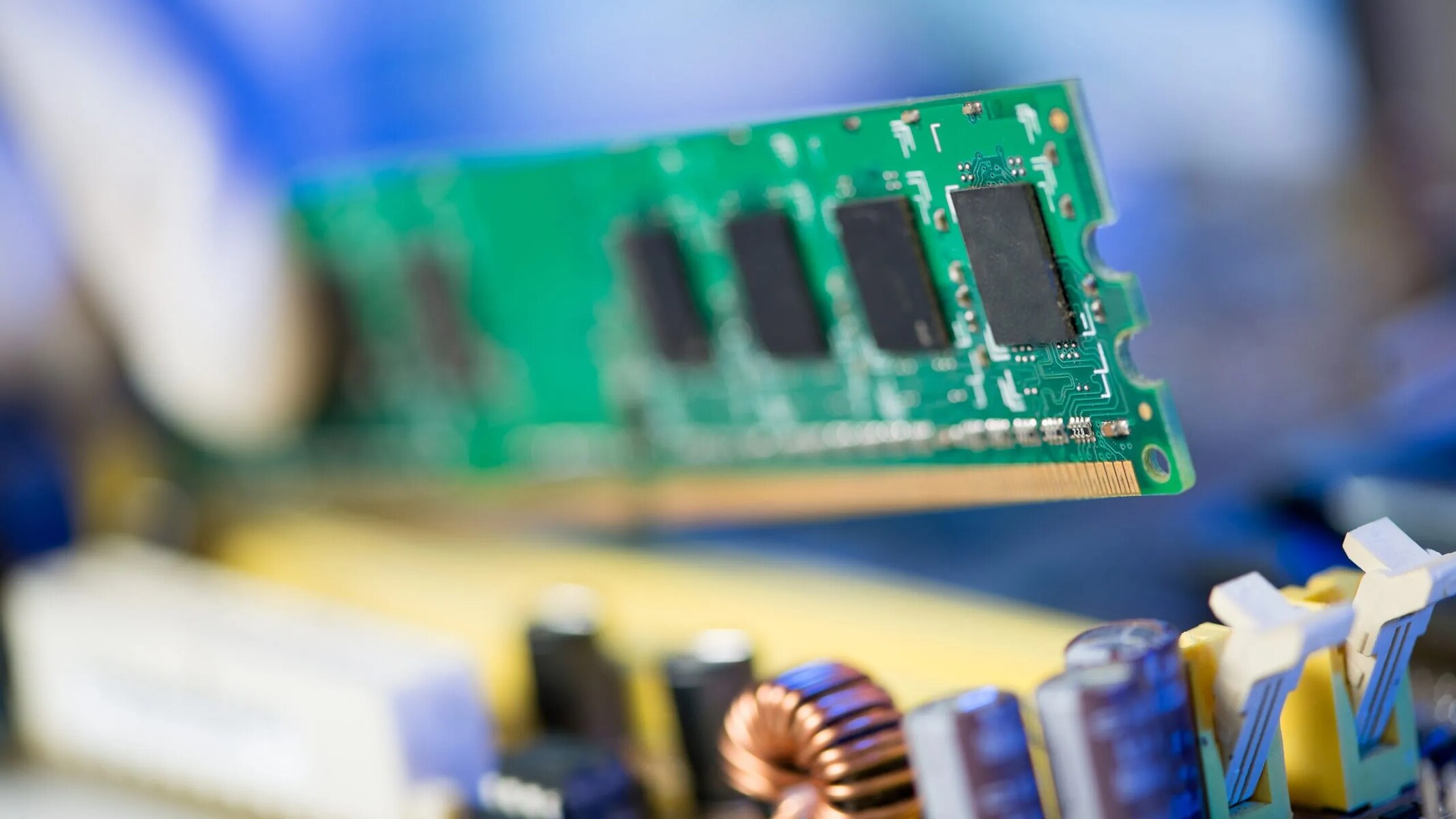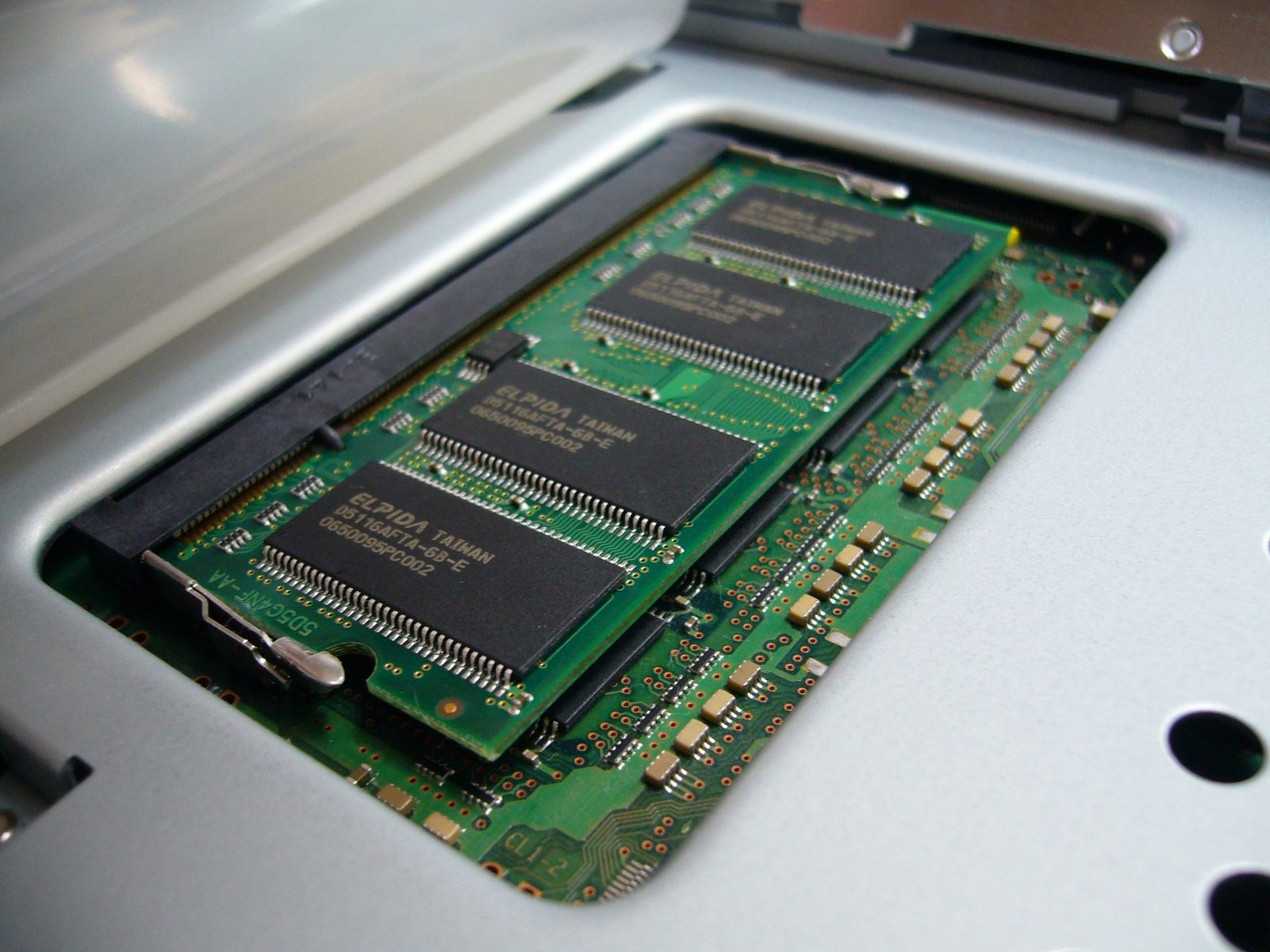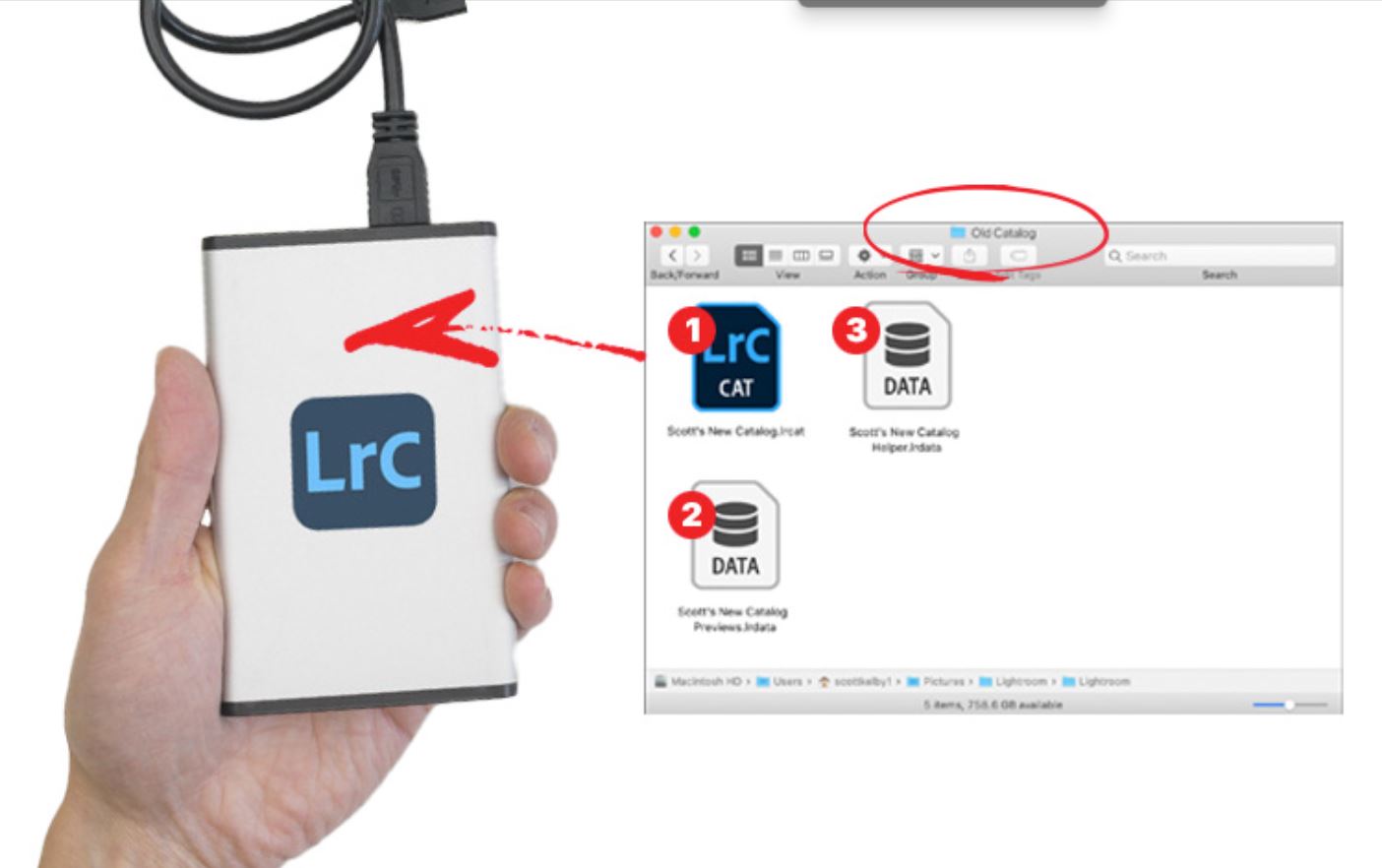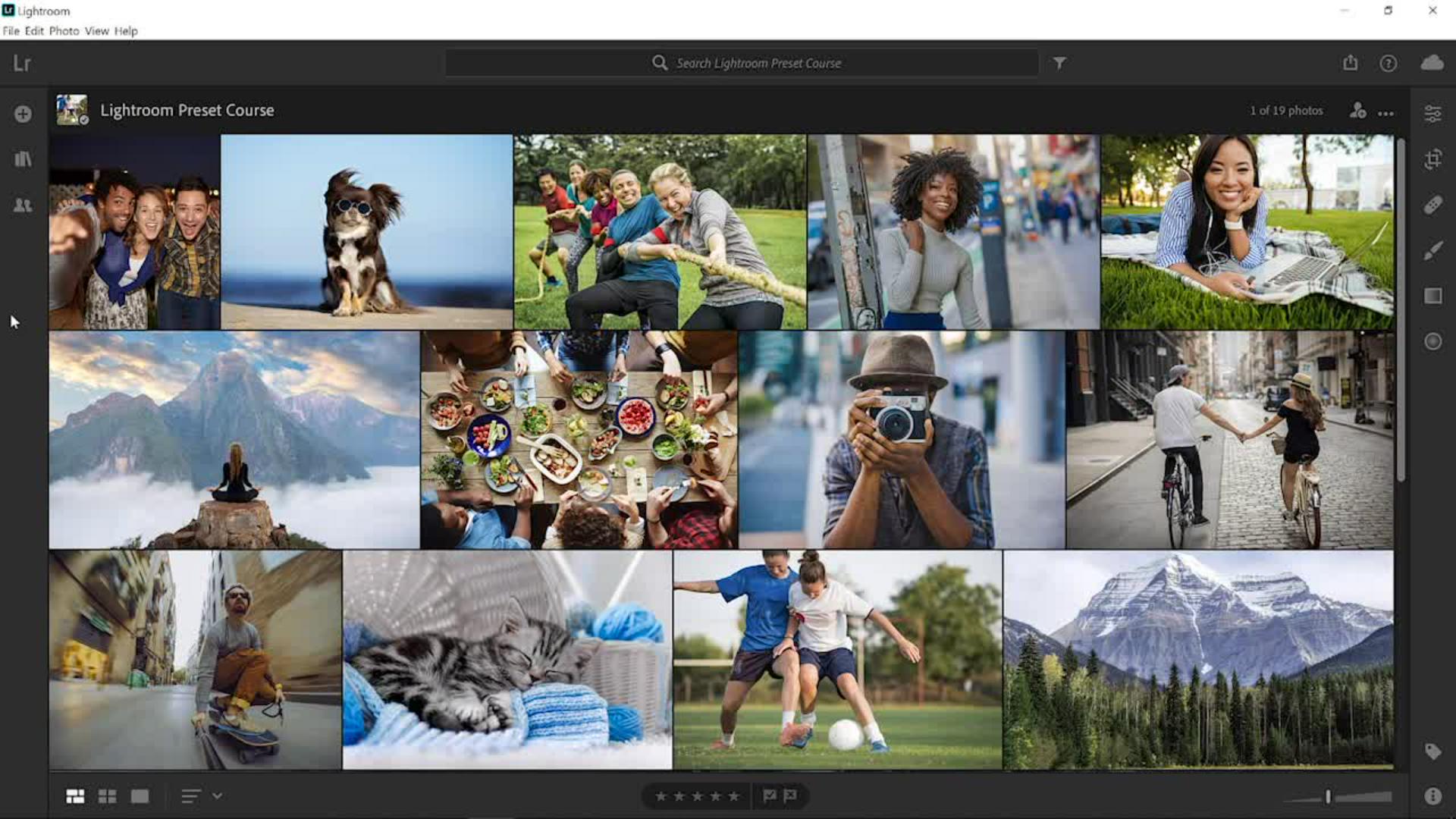Introduction
Welcome to the world of digital photography, where capturing moments and preserving memories has become easier than ever before. With the advent of high-resolution cameras and advanced editing software, photographers now have the ability to transform their images into stunning works of art.
One such powerful editing software is Adobe Lightroom. Whether you’re a professional photographer or an enthusiast, Lightroom offers a plethora of tools and features to enhance your photos and bring out their true potential.
However, to use Lightroom effectively and efficiently, you need to ensure that your computer meets the necessary system requirements. One crucial factor to consider is the amount of Random Access Memory (RAM) that Lightroom requires.
RAM is a form of computer memory that allows your computer to store and quickly access data. In the case of Lightroom, RAM plays a vital role in enhancing its performance and responsiveness. It enables Lightroom to process and manipulate your images smoothly, especially when dealing with multiple large files or running resource-intensive tasks like batch editing or applying complex filters.
Having an insufficient amount of RAM can lead to frustratingly slow performance, lag times, and even system crashes. On the other hand, having too much RAM might seem like overkill and unnecessarily increase the cost of your computer.
In this article, we will explore the minimum and recommended RAM requirements for Lightroom and delve into the factors you should consider when determining the amount of RAM you need. We will also provide you with tips to optimize Lightroom’s performance without adding more RAM, helping you make an informed decision and get the most out of your editing experience.
What is Lightroom?
Adobe Lightroom is a popular photo editing and management software that is widely used by professional photographers, hobbyists, and enthusiasts alike. It is part of the Adobe Creative Cloud suite of applications and offers a comprehensive set of tools for enhancing, organizing, and sharing your digital images.
Lightroom is known for its non-destructive editing capabilities, which means that your original image remains untouched, and any adjustments or modifications are applied as separate data layers. This allows you to experiment with various editing techniques and easily revert back to the original image if desired.
One of the key features of Lightroom is its powerful image organization capabilities. It allows you to import and store your photos in a central catalog, making it easy to locate and manage your entire photo library. Lightroom offers robust tagging, keywording, and filtering options that enable you to quickly find specific images based on various criteria such as location, date, subject, and more.
In addition to organizing your images, Lightroom provides a wide range of editing tools to help you fine-tune your photos. From basic adjustments like exposure, contrast, and white balance to advanced techniques such as selective editing, noise reduction, and lens correction, Lightroom offers a comprehensive set of features to enhance the quality and aesthetics of your images.
Furthermore, Lightroom supports non-destructive editing of RAW files, which are high-quality image files captured directly from your camera’s sensor. This allows you to utilize the full potential of your RAW files and make precise adjustments to every aspect of your image, including color, tone, and detail.
Lightroom also offers seamless integration with other Adobe applications such as Photoshop, allowing you to easily transfer your images between the two programs for further editing and retouching. This integration provides a powerful workflow for photographers who require more advanced editing capabilities beyond what Lightroom alone can offer.
With its intuitive interface, powerful editing tools, and efficient organizational capabilities, Lightroom has become an essential tool for photographers of all skill levels. Whether you’re a professional looking to streamline your editing workflow or an amateur wanting to enhance your photos, Lightroom provides the tools and flexibility you need to bring out the best in your images.
How does Lightroom use RAM?
RAM (Random Access Memory) plays a crucial role in the performance of Adobe Lightroom. As a photo editing software that processes large image files and handles resource-intensive tasks, Lightroom relies on RAM to provide a smooth and responsive user experience.
When you open and work with images in Lightroom, the software needs to load those images into memory for processing. The more images you’re working with simultaneously, the more RAM Lightroom requires to handle the data efficiently. It allows Lightroom to quickly access and manipulate the images without experiencing delays or slowdowns.
Furthermore, Lightroom utilizes RAM for various other operations. When you make adjustments to your images, Lightroom applies those edits in real-time and previews the changes on your screen. This means that Lightroom constantly writes data to and reads data from RAM to update the image preview and reflect the modifications you’re making.
In addition, Lightroom uses RAM for caching purposes. It stores temporary data in RAM to improve the performance of certain operations. For example, when you apply a filter or perform a search within your photo library, Lightroom stores the results in RAM for faster retrieval. This caching mechanism helps in speeding up operations and reduces the need to reload data from the slower storage drives.
RAM is also utilized by Lightroom when exporting or generating previews of your images. When you export images to a different file format or size, Lightroom needs to process and write the new files, which requires a significant amount of memory. Similarly, when Lightroom generates previews, it stores them in RAM for quicker access, especially when switching between images in the Library module.
It’s worth noting that the amount of RAM Lightroom uses depends on the size and complexity of your image files, the number of images you’re working with, and the specific operations you’re performing. If you’re dealing with high-resolution RAW files or working on multiple projects simultaneously, Lightroom will require more RAM to handle the increased workload effectively.
Overall, having an adequate amount of RAM is crucial for Lightroom’s performance. Insufficient RAM can lead to sluggishness, slow operations, and potential system crashes. Therefore, it’s important to consider your specific workflow and image requirements when determining how much RAM you need for Lightroom.
Minimum RAM requirements for Lightroom
Adobe provides minimum system requirements for Lightroom to ensure smooth functionality and optimal performance. These requirements include the minimum amount of RAM your computer should have to run Lightroom effectively.
The minimum RAM requirement for Lightroom depends on the specific version you’re using. However, as a general guideline, Adobe recommends having at least 8GB of RAM for Lightroom Classic CC and Lightroom CC. With 8GB of RAM, you should be able to perform basic photo editing tasks and handle smaller image files without experiencing significant performance issues.
It’s important to note that while 8GB is the minimum recommendation, it might not provide the best experience, especially if you’re working with larger image files or processing multiple photos simultaneously. In such cases, having more RAM can greatly improve Lightroom’s performance and responsiveness.
If you’re using Lightroom Classic CC and frequently work with high-resolution RAW files or perform resource-intensive tasks such as batch editing or using complex filters, upgrading to 16GB or even 32GB of RAM is advisable. The extra RAM allows Lightroom to handle the increased workload more efficiently, resulting in faster editing and smoother operation.
For Lightroom CC, which is the cloud-based version of Lightroom, the minimum RAM requirement is also 8GB. However, since Lightroom CC stores your images in the cloud and performs most of the processing on Adobe’s servers, the impact of RAM on performance might be slightly less compared to Lightroom Classic CC. Nevertheless, having more RAM can still improve the overall experience and speed up certain operations.
Keep in mind that these minimum RAM requirements are based on Adobe’s recommendations, and the specific needs of your photography workflow may vary. If you frequently work on large projects, handle extensive photo libraries, or use other memory-intensive applications alongside Lightroom, you might require even more RAM to maintain smooth operations.
In the end, it’s always beneficial to have more RAM than the minimum requirement, as it provides headroom for handling complex tasks, multi-tasking, and future software updates. Investing in additional RAM can significantly enhance your Lightroom experience and ensure that you can efficiently edit and manage your photographs.
Recommended RAM for Lightroom
While the minimum RAM requirement for Lightroom will allow you to run the software, it’s often recommended to have more RAM to ensure optimal performance and a smoother editing experience. The recommended amount of RAM for Lightroom depends on various factors, including your specific photography needs and the complexity of your editing workflow.
As a general rule of thumb, Adobe recommends having at least 16GB of RAM for Lightroom Classic CC and Lightroom CC. With 16GB of RAM, you will have enough memory to comfortably handle large image files, perform complex edits, and multitask within Lightroom.
Having 16GB of RAM allows Lightroom to cache more data and provides the necessary headroom for processing actions like exporting files, creating previews, and performing image adjustments. This extra memory ensures a smoother and more responsive user experience, especially when dealing with high-resolution images and resource-intensive tasks.
If you’re a professional photographer or frequently work on extensive projects, upgrading to 32GB or even 64GB of RAM is highly recommended. Having more RAM allows Lightroom to handle even larger files and complex editing operations with ease, minimizing any potential lag or delay in performance.
Additionally, if you often switch between Lightroom and other memory-intensive applications like Photoshop or video editing software, having more RAM will help maintain smooth transitions and prevent your system from becoming overloaded.
It’s worth noting that the recommended amount of RAM for Lightroom might be influenced by other hardware factors, such as the efficiency of your processor and the speed of your storage drive. A powerful processor and a fast SSD (Solid State Drive) can work in synergy with sufficient RAM to provide an optimal editing environment in Lightroom.
Ultimately, the recommended amount of RAM for Lightroom is subjective and dependent on your specific work requirements. Assessing your editing workflow, the size and complexity of your image files, and considering any other memory-intensive tasks you perform on your computer will help you determine the ideal amount of RAM.
Investing in more RAM than the minimum requirement can significantly improve your editing experience and ensure that Lightroom operates efficiently, allowing you to focus on your creative process rather than dealing with performance issues.
Factors to consider when determining how much RAM you need for Lightroom
When determining how much RAM you need for Lightroom, it’s important to consider various factors that can influence the performance and efficiency of the software. By assessing these factors, you can make an informed decision about the amount of RAM that will best suit your specific editing needs.
1. Image file size and resolution: The size and resolution of your image files play a significant role in the amount of RAM Lightroom requires to process them efficiently. If you work with high-resolution RAW files or large image files, having more RAM can help Lightroom handle these files without slowing down or encountering performance issues.
2. Number of images and multitasking: If you typically work with a large number of images simultaneously or engage in multitasking while using Lightroom, more RAM is beneficial. It allows Lightroom to process a greater amount of data simultaneously, enabling a smoother workflow and preventing any lag or delay in performance.
3. Editing techniques and complexity: The complexity of your editing techniques and the intensity of adjustments you apply to your images can influence the amount of RAM required by Lightroom. Complex adjustments like extensive retouching, applying multiple layers of adjustments, or using advanced features like the healing brush or gradient filters can benefit from having more RAM available.
4. Resource-intensive tasks: If you frequently perform resource-intensive tasks in Lightroom, such as batch editing, merging HDR or panorama images, or using complex filters, having more RAM can greatly enhance the speed and efficiency of these processes. It allows Lightroom to handle these tasks with ease, resulting in quicker operations and faster completion times.
5. System requirements and future-proofing: Consider the recommended system requirements provided by Adobe for Lightroom and ensure that your computer meets or exceeds those specifications. Additionally, think about future-proofing your system. If you plan to keep using Lightroom for an extended period or anticipate working on more demanding projects in the future, investing in additional RAM can help ensure that your system can handle those requirements efficiently.
6. Other memory-intensive applications: Take into account any other memory-intensive applications you use concurrently with Lightroom. If you frequently use software like Photoshop, video editing tools, or run virtual machines, having more RAM will help maintain smooth performance across all applications and prevent your system from becoming overwhelmed.
By considering these factors, you can assess your editing workflow and requirements to determine the appropriate amount of RAM needed for Lightroom. Remember, having more RAM than the minimum requirement will provide headroom for efficient processing, smoother performance, and an overall enhanced editing experience.
How to check your computer’s current RAM usage
Checking your computer’s current RAM usage can provide valuable insights into how much memory is being used and help you determine if you have sufficient RAM for running Lightroom smoothly. Here are a few methods to check your computer’s RAM usage:
1. Task Manager (Windows): On Windows operating systems, you can open the Task Manager by pressing Ctrl + Shift + Esc or right-clicking on the taskbar and selecting “Task Manager.” In the Task Manager window, go to the “Performance” tab and click on “Memory.” Here, you’ll find information about your computer’s current RAM usage, including the total amount of physical memory and how much is currently in use.
2. Activity Monitor (macOS): On macOS, you can use the built-in Activity Monitor to check your computer’s RAM usage. You can access it by searching for “Activity Monitor” in Spotlight or locating it in the Utilities folder within the Applications folder. In the Activity Monitor window, click on the “Memory” tab, where you’ll find details about your computer’s memory usage, including the memory pressure graph and the amount of memory currently being used.
3. Resource Monitor (Windows): Another way to check RAM usage on Windows is by using the Resource Monitor. Press the Win + R key combination to open the Run dialog box, then type resmon and press Enter. In the Resource Monitor window, go to the “Memory” tab, where you can view detailed information about how your computer’s memory is being utilized by various processes.
4. Activity Monitor (Linux): If you’re using Linux, you can use the built-in System Monitor or Task Manager utility to check your computer’s RAM usage. The location and name may vary depending on the Linux distribution you’re using. In the system monitor, navigate to the memory tab, where you’ll find information about your computer’s total memory, used memory, free memory, and cached memory.
By checking your computer’s RAM usage, you can get a sense of how close you are to reaching the limits of your current system’s memory capacity. If you often find your RAM usage close to or reaching its maximum capacity while using Lightroom, it may be an indication that upgrading your RAM would greatly benefit your editing workflow and overall system performance.
Keep in mind that monitoring your RAM usage may vary slightly depending on your operating system, but the general principle remains the same. By understanding how much RAM Lightroom and other applications are consuming, you can make more informed decisions about upgrading your computer’s memory to optimize your editing experience.
Upgrading your RAM for Lightroom
If you find that your computer’s RAM is consistently reaching its limits while using Lightroom, upgrading your RAM can significantly improve the software’s performance and enhance your editing experience. Here are some considerations and steps to take when upgrading your RAM for Lightroom:
1. Check your computer’s specifications: Before upgrading your RAM, ensure that your computer can support higher memory capacity. Check your computer’s documentation or manufacturer’s website to find out the maximum amount of RAM it can accommodate and the type of RAM modules it requires.
2. Determine the RAM capacity you need: Evaluate your editing workflow and the factors we discussed earlier, such as image file sizes, multitasking, and resource-intensive tasks. Based on these factors, determine the amount of RAM that will best suit your needs. Consider opting for a higher capacity than your current RAM to allow for future growth and improved performance.
3. Choose compatible RAM modules: Once you know the maximum RAM capacity your computer can accommodate, select compatible RAM modules. The type, speed, and form factor (e.g., DDR4, 2400MHz, DIMM, etc.) should match your computer’s requirements. Consult your computer manufacturer’s guidelines or seek advice from a reputable computer hardware retailer if needed.
4. Install the new RAM modules: Upgrading your RAM involves physically installing the new RAM modules into your computer. Ensure you follow proper safety precautions and consult your computer’s documentation for instructions specific to your model. This typically involves opening the computer case, locating the RAM slots, and inserting the new modules.(Disclaim: The task could potentially be challenging and may require technical knowledge. If you are uncertain, it is recommended to seek professional assistance).
5. Test and verify: Once you’ve installed the new RAM modules, power on your computer and verify that the system recognizes the upgraded memory capacity. Check the system settings or use diagnostic tools to confirm that the RAM upgrade was successful and the new capacity is recognized by your computer.
6. Optimize Lightroom settings: After upgrading your RAM, you may need to adjust Lightroom’s settings to take advantage of the increased memory capacity. In Lightroom’s preferences or settings, ensure that the application is configured to use the available RAM effectively. For example, you can increase the “Camera Raw Cache” size or adjust the “Performance” settings to allocate more memory to Lightroom.
By upgrading your RAM, you can provide Lightroom with the necessary resources to handle large image files, perform complex edits, and process resource-intensive tasks more efficiently. This can result in improved responsiveness, faster operation, and a smoother overall editing experience.
Remember, if upgrading your RAM is not feasible due to hardware limitations or other reasons, consider optimizing Lightroom’s performance by following best practices such as optimizing catalog settings, clearing cache, and optimizing image previews. These steps can help maximize your current RAM allocation and improve Lightroom’s performance to the best of your system’s capabilities.
Tips to optimize Lightroom’s performance without adding more RAM
If upgrading your computer’s RAM is not an option or you want to optimize Lightroom’s performance before considering a RAM upgrade, there are several steps you can take to enhance its efficiency. These tips can help optimize Lightroom’s performance without adding more RAM:
1. Optimize catalog settings: Lightroom’s catalog stores information about your images, adjustments, and metadata. To optimize performance, ensure that your catalog is properly optimized. This includes regularly backing up and optimizing the catalog to remove any unnecessary data or wasted space.
2. Clear cache: Lightroom utilizes cache to store temporary data to speed up operations. However, an excessively large cache can slow down Lightroom. Regularly clearing the cache within Lightroom’s preferences or settings can free up valuable disk space and potentially improve performance.
3. Optimize image previews: Lightroom generates previews for your images to provide faster loading times and a smoother editing experience. However, generating previews for all your images can consume significant resources. Consider generating standard-sized or minimal previews for only the images you actively work on or need to display quickly, rather than generating previews for your entire catalog.
4. Use Smart Previews: Smart Previews in Lightroom allow you to work with smaller, compressed versions of your original images. Enabling Smart Previews can help improve Lightroom’s performance, especially when working with larger image files. Smart Previews allow you to apply edits and adjustments to your images without requiring access to the original RAW files.
5. Adjust your preferences: Lightroom offers various performance-related preferences that you can adjust to optimize its usage of system resources. For example, in the preferences or settings, you can adjust the number of history states, increase the cache size, or reduce the quality of image previews to enhance performance while sacrificing minimal visual quality.
6. Use GPU acceleration: Lightroom has the capability to leverage your computer’s graphics processing unit (GPU) to accelerate certain tasks. Enabling GPU acceleration in Lightroom’s preferences or settings can help improve performance, especially when working with tasks that heavily use graphics processing power.
7. Organize and optimize storage: Ensure that your image files and Lightroom catalog are stored on a fast and reliable storage drive. SSDs (Solid State Drives) generally offer faster read and write speeds compared to traditional hard disk drives (HDDs), which can contribute to improved performance when accessing and editing images in Lightroom.
8. Keep Lightroom and your system updated: Regularly updating Lightroom and your operating system ensures that you have the latest performance improvements, bug fixes, and compatibility enhancements. These updates can often result in notable performance gains and overall stability.
By implementing these tips, you can optimize Lightroom’s performance and enhance its efficiency without the need to add more RAM. While adding more RAM is often a beneficial upgrade, these optimization steps can help you maximize your current system’s resources and improve your overall Lightroom experience.
Conclusion
RAM plays a crucial role in determining the performance and efficiency of Adobe Lightroom. It enables the software to handle large image files, complex edits, and resource-intensive tasks smoothly. Determining the appropriate amount of RAM for Lightroom involves considering factors such as image file sizes, multitasking, editing techniques, and resource-intensive tasks specific to your workflow.
Adobe recommends a minimum of 8GB of RAM for Lightroom, but it’s often beneficial to have more RAM to ensure optimal performance. For Lightroom Classic CC and Lightroom CC, a recommended amount of 16GB or more is preferable, especially for professional photographers or those working with extensive projects. Upgrading to 32GB or higher can further enhance performance for more complex workflows and multitasking.
If adding more RAM is not feasible, there are alternative steps to optimize Lightroom’s performance. These include optimizing catalog settings, clearing cache, generating limited image previews, using Smart Previews, adjusting preferences, enabling GPU acceleration, organizing storage, and keeping Lightroom and the system updated.
By understanding your specific needs, evaluating your workflow, and considering the tips mentioned, you can make informed decisions about upgrading your RAM or optimizing Lightroom to maximize its performance. Remember that a combination of adequate RAM and optimization techniques can significantly enhance Lightroom’s responsiveness, improve efficiency, and provide an overall smoother editing experience.
Whether you’re a professional photographer or an enthusiast, investing in the right amount of RAM or implementing optimization strategies will help you make the most of Adobe Lightroom and bring your creative vision to life.

























